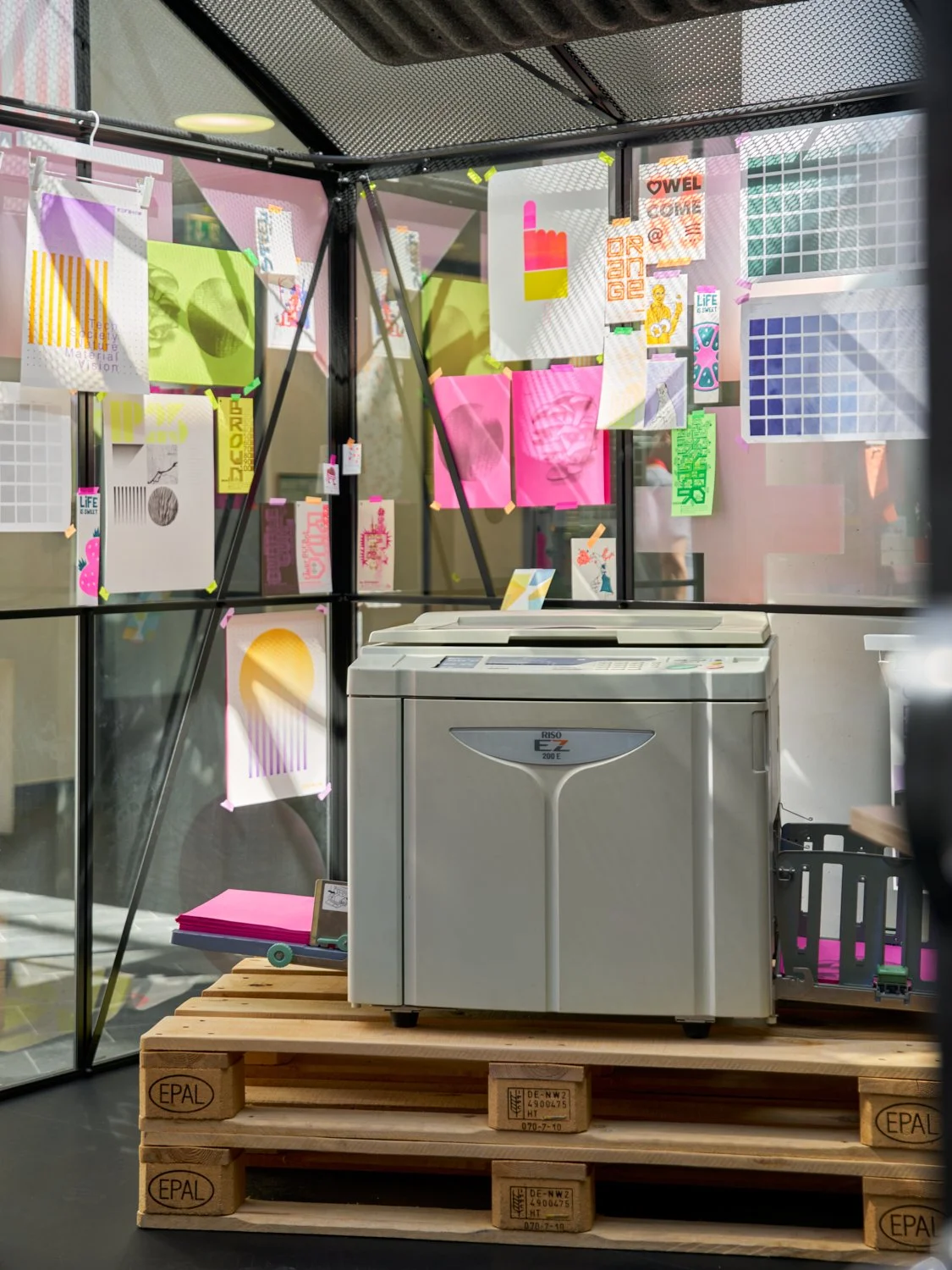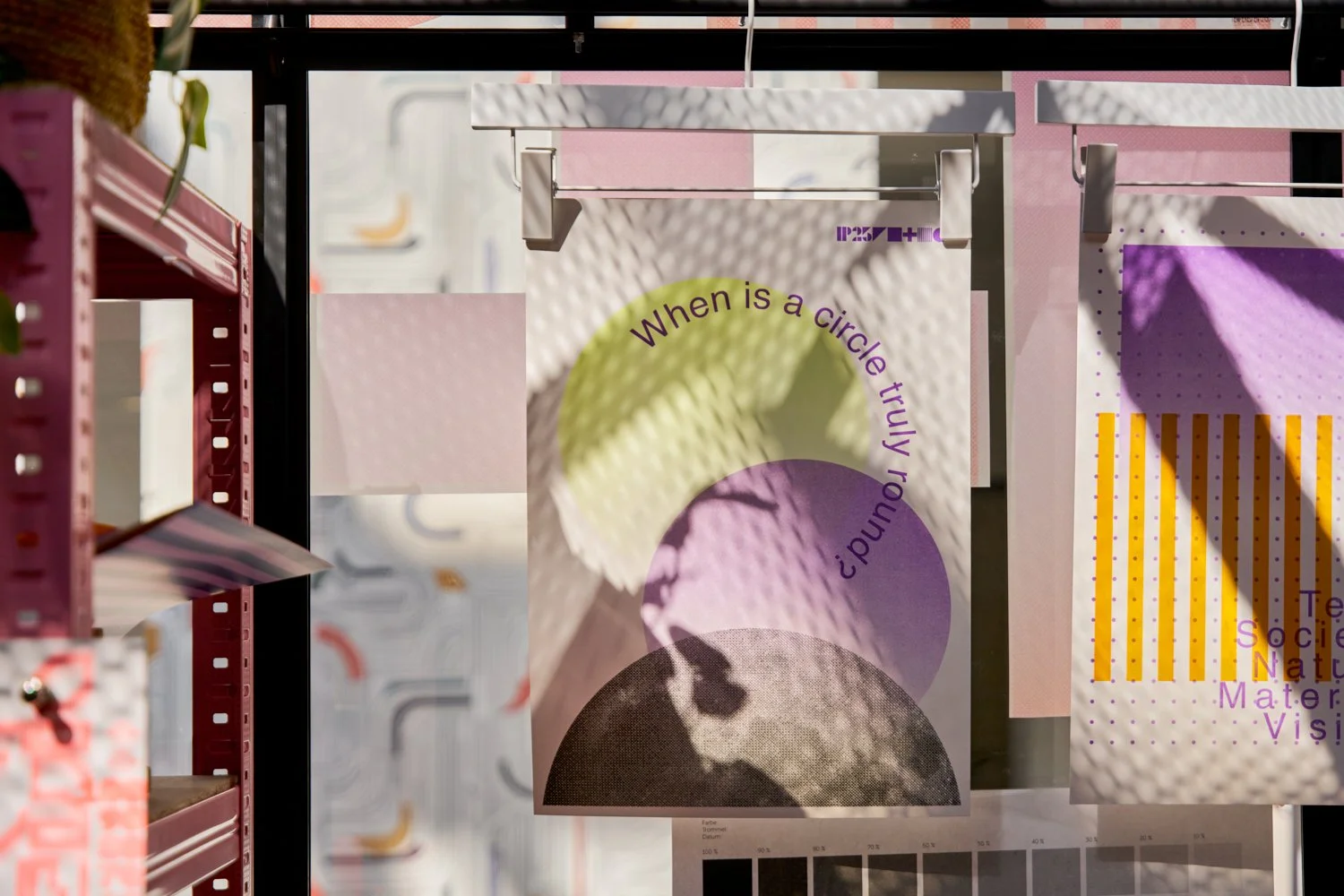Why Riso? A Printing Technique That Matches Our Pulse
If you've seen our recent visual experiments, you may have noticed something different — the bold colours, the slight misalignments, the vibrant, imperfect beauty. That’s Riso. Short for Risograph, this printing technique originated in Japan in the 1980s and has since become a favourite among artists, designers, and collectives worldwide.
But why Riso, and why now?
IP25 is about exploration. About working with tools and methods that encourage play, unpredictability, and tactile engagement. Riso is all of that: a stencil-based printing process that produces uniquely layered results, somewhere between screen printing and photocopying. Each print is slightly different, carrying its own quirks and rhythm — no two outcomes are ever truly the same.
This resonates with how we approach collaboration and design: experimental, colourful, and always in motion.
For our Open House, we transformed the atrium into a mini Riso lab — a place to experiment, observe and discuss. A real Risograph machine stood at the centre of the space, surrounded by hanging test prints, posters and colour swatches. Together with Prof. Dr. Markus Schröppel (Media University Cologne), known for his extensive work and expertise in Riso printing, who introduced us to the world of Riso, we explored its potentials not just as a printing technique, but as a tool for storytelling, iteration and surprise.
We’re not using Riso to look retro or lo-fi. We use it because it speaks to the way we think: fast, iterative, experimental — and sometimes surprisingly beautiful.
More to come soon.
Image rights:
Annika Feuss




